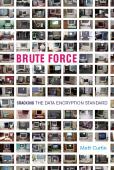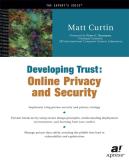Tron (1982)
 Tron is a story of independence in the world of the
computer. Two primary characters struggle for freedom in the
world of electrons. The first is Alan Bradley (Bruce Boxleitner), who
works from inside the system, developing a program called
Tron—a security program to monitor contact between systems
and to put a stop to unauthorized connections. The second is
Kevin Flynn (Jeff Bridges), a brilliant programmer whose
work—a series of video games that became a big hit when
brought to market—was stolen by a greedy insider called Ed
Dillinger (David Warner). Dillinger's program, a system-wide
command-and-control program called the Master Control Program
(MCP) operated as did Dillinger, by annexing others' work that
would be useful and destroying everything else. Designed to run
independently, Tron would stand in the way of the MCP's
unauthorized intrusions and annexations.
Tron is a story of independence in the world of the
computer. Two primary characters struggle for freedom in the
world of electrons. The first is Alan Bradley (Bruce Boxleitner), who
works from inside the system, developing a program called
Tron—a security program to monitor contact between systems
and to put a stop to unauthorized connections. The second is
Kevin Flynn (Jeff Bridges), a brilliant programmer whose
work—a series of video games that became a big hit when
brought to market—was stolen by a greedy insider called Ed
Dillinger (David Warner). Dillinger's program, a system-wide
command-and-control program called the Master Control Program
(MCP) operated as did Dillinger, by annexing others' work that
would be useful and destroying everything else. Designed to run
independently, Tron would stand in the way of the MCP's
unauthorized intrusions and annexations.
When Flynn crosses the MCP in an effort to reconstruct the evidence to show that Dillinger stole his work, the MCP uses a molecular transportation system to bring Flynn out of the real world and into the world on the other side of the screen. Working in cyberspace, Flynn works with Tron and a small cast of supporters to bring down the MCP and return freedom to the system.
Being only nine years old when it was released, I didn't first see the movie in the theater. Four years later, I was somehow familiar with the movie and had some idea that it was one that I wanted to see—though I cannot remember whether it was for the first time. My parents were invited to a card party on the evening it was to be broadcast on local television and somehow or other, my siblings and I were also expected to go. To ensure that I would not miss the movie, I procured a videocassette tape and programmed the family's VCR to record the movie in my absence. When we arrived at the party, my siblings and I followed our parents through the process of making greetings. As the host tried to convince my father to remove his necktie (apparently having some objection to a man dressing properly for a social event), we children were directed to a separate part of the home where we'd not be likely to interfere with the heavy-duty card playing that would be taking place on the main floor. Finding an obliging television that would allow me to watch the movie even as it was being recorded at home, I really had no objection to being temporarily sequestered downstairs. I still have the videotape, complete with stupid commercials, and it is not in good condition.
Tron shows computers and their programs as being far more than cold, simple tools configured to improve efficiency in various business functions. It shows the world of computing from inside of the machine, where programs bear critical characteristics to their creators and interact with each other in a complex electronic world in an attempt to carry out the wishes of their users.
The film reflects a vision of computing that has been described by such pioneering programmers as Alan Kay—for whom the movie's Alan character is named, who saw the world as full of small computing devices that people would have all around them, and whose programs would work as agents that would be sure that people had access to the information that mattered to them whenever they wanted it. These were radical ideas in 1982 and it was by no means clear that people would ever understand this vision of the future. Now firmly into the twenty-first century, we can see that this is indeed just what computer technology is all about. Others were more focused on immediate problems of data processing, estimating the total worldwide market for computers would be something like six, asking why in the world anyone would ever want a computer at home, or otherwise failing to see computing beyond the set of stuff that could be made, marketed, and sold in the immediate future. In a late-evening argument between Dillinger and Dr. Walter Gibbs, the technologist who founded the company that employs them all, these competing philosophies of computing were presented.
Dillinger: I can't worry about every user request that comes in here.
Gibbs: User requests are what computers are for!
Dillinger: Doing our business is what computers are for!
Central to telling the story was the characters and their dealings with one another. Tron is a no-nonsense program, dedicated to the commission he was given by his user, Alan, himself a quiet, slightly awkward, analytical professional programmer. Flynn is brilliant and jovial (“Now how are you going to run the universe if you can't answer a few unsolvable problems?” Flynn asks the MCP). Flynn continues his work with or without sanction, unafraid of those who would call him a renegade. When brought into the world of the computer, he uses his insights and power to do what must be done—and that which cannot be seen or executed by the programs incapable of seeing beyond the options handed to them by another. (“I hate to disappoint you, but that's the way it is most of the time for users, too,” he tells Tron and Laura's program Yori.)
Laura (Cindy Morgan) is another programmer at Encom. Her life's work is the laser that they're using to digitize matter, suspend it, and reassemble it at will. It's her work and her laser that the MCP uses to bring Flynn into the world of digits. She's smart and prizes intelligence in others around her; she's loyal to her friends and she can assert herself when the need arises. Yori reflects all of these traits, aligning herself and her work Tron just as Laura aligns herself and her work with Alan.
Walter is the gray-bearded sage who founded the company but rather than spending time in the executive suite, he spends his time in the laboratory, building things. His counterpart in the world of the computer is Dumat, the guardian of the I/O (Input/Output) Tower that the system needs to communicate with the world of users.
Dillinger is greedy and unprincipled, doing whatever he believes necessary to achieve his objectives without regard to his impact on others. He originally created the Master Control Program, which came to mirror his personality and began its process of acquisition that made it smarter and more powerful still. His counterpart in the machine is not the MCP itself but Sark, a program that the MCP uses to oversee all of the functions of other programs in the computer. As the story unfolds, we see that Dillinger is not as powerful as he is believed; like Sark, he has become an agent of the MCP. (“You wouldn't want me to read up Flynn's file on a VDT at the Times, now, would you?” threatens the MCP when Dillinger tries to assert some authority over it.)
What I was able to see through the characters of Flynn, Alan, Laura, and Walter is that there are people who need to think up the things that computers can do and then figure out how to do it. A year or so later, I would come across Steven Levy's Hackers and learn about some of the real people represented through the characters shown on-screen. By this time, I was already a programmer and often found myself far ahead of most of my classmates when it came to making the machines do interesting things.
As my final year of high school drew to a close, I spent some time thinking about operating systems and decided that if I really wanted to know how they worked, I was going to need to do more than use operating system made by others. I had already done quite a lot with getting Apple Computer's ProDOS 8 and ProDOS 16 to behave according to my wishes instead of their usual specifications. I decided that I wanted to understand how to make multiuser systems like those mysterious Unix systems that I was learning about. After high school graduation, I set about building my own operating system. Using a strange Apple DOS 3.3 implementation modified for use on my Apple IIGS 800kB 3.5-inch floppy disks called AmDOS as my filesystem and interface to hardware, I wrote a shell program that allowed the user to enter commands for the computer and to launch programs. Once the shell was working, I created a new program that would prompt the user for a username and password; a successful combination would cause a specified program—in practice, the shell I wrote, but could really be anything—to be executed and failure would simply begin the authentication procedure anew, tersely displaying LOGON: before waiting for input from the user. I called my shell the Master Control Program and designed the user interface to appear like screens that appeared in the movie.
My high school vocational training in data processing on IBM System/36 systems to write programs in OCL, BASIC, RPG II, and COBOL showed little regard for the human side of computing. It was all business and about as boring as can be. Fortunately, by then I had discovered The Network, such as it was at the time, and came to be acquainted with people who were then wired. That was the group that had vision, that was making something because of a higher calling, the sort of imperative that would drive creation—the same sort of calling that was heard by Newton, Leonardo, and Archimedes. The mundane matter of how to get paid was, at most, a secondary consideration. In that world, imagination was prized, as was technical skill. Those who would succeed would need to have plenty of both. In this meritocracy, degrees, certifications, and institutional affiliation were irrelevant. What mattered was the work.
Tron was far ahead of its time; released fifteen years later it might well have become a blockbuster, though by then, much of what was being presented was becoming the obvious conclusion to the adoption of all of the technology around us. It's unlikely that I would have gone in some other direction but for the film; I had already written some simple computer programs by the time I was nine and did independently find many other avenues into the world where creativity and technology intersected. Even so, the film was prescient at the time of its release and helped to influence my ideas about computing and what was possible. If you want to understand what's happening inside of your computer, my advice is to begin by watching Tron.


That said, good flick.
end of line.